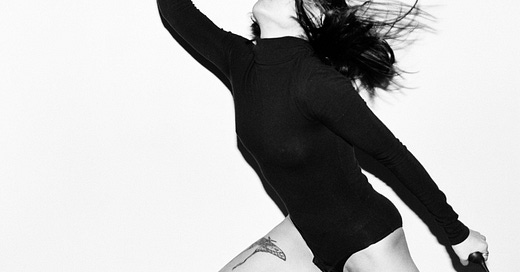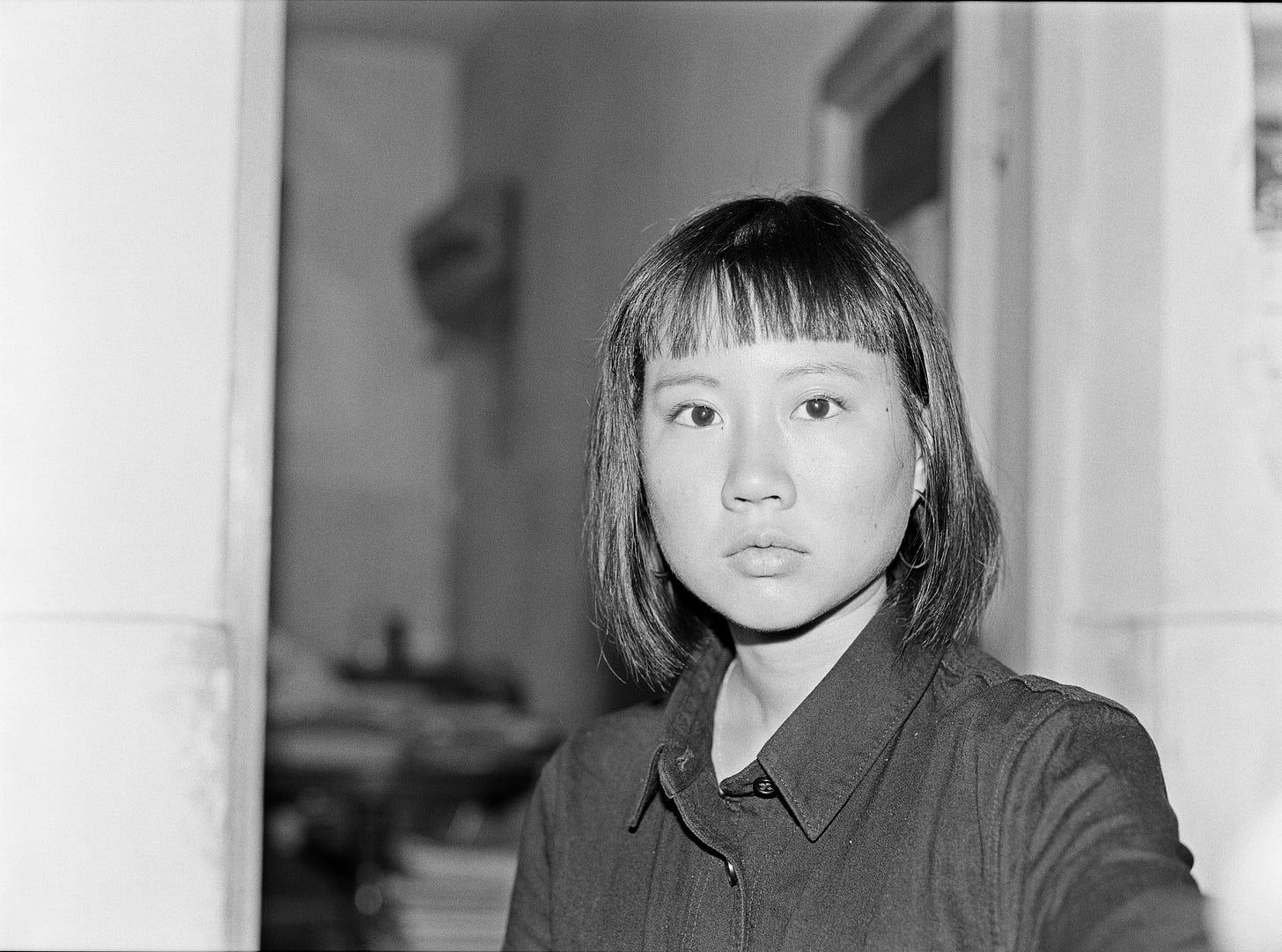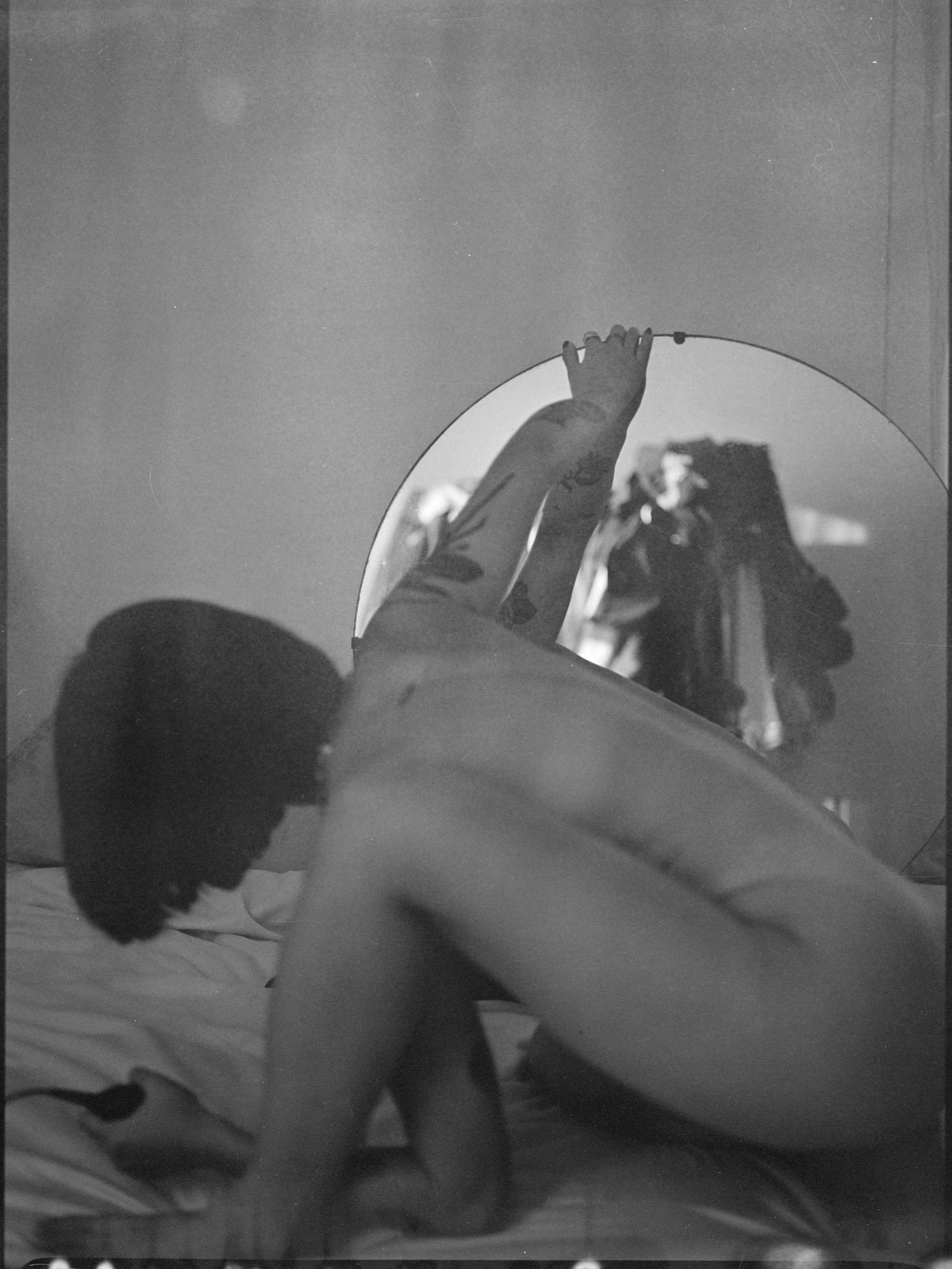I intended to get this newsletter out before the end of March, but ironically illness (and work and life) got in the way. March was Endometriosis Awareness Month and I wanted to share a bit about my chronic illness and its role in my art making. This will likely be my longest newsletter to date, so if you make it to the end, I appreciate you.
*Content warning: I will be talking about surgery, chronic pain, bleeding, body dysmorphia, mental health, and suicidal ideation.
Endometriosis (endo) is a chronic, inflammatory disease that is estimated to affect 1 in 10 people with a uterus. It is defined as a disease in which tissue similar to the endometrium grows outside of the uterus. This type of tissue has been found on every single organ of the body, including the eye. These growths lead to inflammation, scar tissue, and the fusing of organs that in turn result in symptoms like severe pain, fatigue, bloating, heavy menstrual bleeding, pain with urination, pain with bowel movements, and nausea, to name a few. There is no cure and current treatments are only meant to alleviate the symptoms.1
I don’t remember always having “bad” periods. The symptoms really began during college - extremely heavy bleeding, fatigue, intense pain, nausea. For years, I just figured some people had worse periods than others and that was just how it was. It wasn’t until the COVID pandemic shut everything down that I really started to notice how debilitating the symptoms were. I had been accustomed to constantly being on the go and saying yes to everything. I was a person that was quintessentially “doing too much” and became used to pushing through the pain. As everyone was forced to slow down and simply notice more, I was able to assess how intensely these symptoms affected my well-being. I remember hearing a quote from a doctor around this time: “Periods should be an inconvenience at worst.” It solidified the gravity of what was potentially happening in my body and how unfortunate it is that the pain of those who have periods is so easily dismissed.
Thankfully, it has become more and more mainstream to talk about endo. In fall of 2020 when I was trying to figure out what was wrong with me, I ended up taking the route that many people take, which involves scouring through Reddit and Facebook groups put together by people who have gone through the same diagnosis journey. Like many medical conditions that are considered “women’s issues,” it is often a long and frustrating journey of self-advocacy and navigating a sexist and racist western healthcare system. I consider myself very lucky in that it only took three doctors and several months until I was taken seriously, as it can take on average up to 11 years to get a diagnosis.2
Currently, the only definitive way to receive a diagnosis is through surgery, although in some very rare cases it can be detected through an MRI. I received laparoscopic and excision surgery in August 2021 and was diagnosed with between Stage 1 and Stage 2 endometriosis. My surgeon excised tissue from five areas around my lower abdomen. Excision surgery is thought to be the “gold standard” for endometriosis removal, but unfortunately it is a progressive and systemic disease, and often times excising the tissue does not result in any relief. This is what happened in my case. Since my surgery, I’ve tried a variety of treatments to manage my symptoms, most of which are not financially sustainable long-term.
My chronic illness is something I’m fairly vocal about in my personal and online life, but even so it is hard to convey the impact that it has on me. The mental toll it can take when feeling like you are doing everything in your power to be healthy to no avail can send me spiraling. One day I can go on a run, see friends, get groceries, and the next I can’t eat from the nausea or walk my dog up the street. I have made big lifestyle, diet, and exercise changes. I have had to come to terms with putting everything on hold, cancelling plans, missing out. “My body is trying to kill me” is a quote I say fairly often to my partner.
Most of the time, I can keep the negative mental effects at bay. Almost a decade of therapy, an Intensive Outpatient Program, and a lifetime of parsing through my own thoughts has helped with that. But occasionally, the overwhelming frustration and hopelessness creeps in. There are nights during flare ups when I cry myself to sleep, having repetitive thoughts about killing myself rather than deal with this disease indefinitely. A desperation courses through me, brought on by feeling so ultimately defeated by something invisible and literally inside of me that I have no control over.
I am so grateful to the supports I have and the privileges I hold that help me continue to survive in a world not made for chronically ill people. Most of why I continue to be so vocal about endo is the number of messages I’ve received from people saying that it has helped them feel less alone or encouraged them to seek a diagnosis.
One thing that has helped me feel like I have any sort of control over my body, and has led me to love and appreciate her in her entirety, is utilizing my body in my art making.
I started to fall into self-portraiture naturally after shooting my 安詳 project in spring 2018. Being alone in my dead grandparents’ apartment in 杭州, not really knowing what I was doing at all or what I wanted to photograph, circling through the rooms and having so many rolls of medium format to finish led me to turn the camera on myself and play around. I wanted to see how I looked in the space itself, sitting on their bed, standing in their kitchen. This was before ever thinking I could have a chronic illness, but experimenting with self-portraiture provided a negotiation between agency and a lack of control that I’ve continued to work into my process ever since.
After I moved back to Pittsburgh in 2018, I stopped making many photos for a long while. I was depressed, working a job that ramped up my anxiety, and I felt uninspired. My primary focus was to get settled back in a place I had wanted to leave and feel comfortable with a new pace and lifestyle after living in NYC and abroad. When I finally starting to feel more positive about the life I was building, the pandemic started and that came with my diagnosis journey that I outlined above.
Turning the camera on myself felt like the most natural and logical thing to do around this time. I still wasn’t seeing many people and making self-portraits was a way to feel more connected to myself. My process has always been instinctual, working off of “vibes” (lol) more than anything else. I typically do not have any clear vision of what I want the photos to look like. I often shoot in my backyard or inside my house purely out of convenience. After seeing what I could create with myself as the subject, how I feel when I’m shooting, and how it’s become somewhat of a somatic experience for me, I’ve been riding that train ever since.
When making my portraits, my goal is to push my body. I am constantly thinking about what will make me feel the strongest in the broadest sense of the word. What will take me out of my head? What will challenge my body, what can it endure, and how will I win against ______? It is a process in which I can feel as in control as possible: positioning the camera, finding the focus, checking the framing, adjusting the settings, posing myself, and finally squeezing the shutter release. It is difficult to describe the feeling of this repetitive process, what I refer to as a performance. The camera becomes an extension of my body. I think subconsciously I hold my breath, and hearing the shutter is my cue to take in air again.
And yet, inevitably “mistakes” happen when I’m making these portraits, teaching me that I will never have full control over it all. Working with the mistakes has produced some of the most meaningful work for me. The double exposures that became an aesthetic device throughout my “Two Open Mouths” project began as a mistake that I then integrated into my process. Learning to lean into failure has seeped from my art making into other aspects of my life, helping me practice acceptance in a way I didn’t know I needed before.
Up until I began regularly incorporating self-portraiture into my practice, I had a long and complex relationship with my body. As many of us do, I struggled with body dysmorphia as a teen and young adult. My relationship to exercise before my endo diagnosis was an unhealthy one, thinking of working out as more of a punishment for eating certain things I considered “bad.” I was obsessed with doing high intensity workouts, and while I felt physically very strong, it took a toll on my body. I was sore and in pain all of the time, fatigued, and not understanding that I wasn’t eating enough protein for the amount I was exercising.
My friend Pat’s death and my endo diagnosis journey happened the same year. I lost a lot of weight from grief and the diet changes I made to help with the inflammation from endo. I felt self-conscious about the way that my body looked. I viewed myself as weak. I was coming to terms with a lot in my life and I felt even less in control than before.
Photographing myself helped me to realize the abilities my body does have. Looking at my self-portraits, I feel how powerful my body is in spite of sickness. I relish in how my body does so much for me, how resilient she is for healing itself time and time and time again. Creating this work has helped me to find acceptance in all of the changes I’ve had to make and fully believe that my body is something incredible.
While there are often moments and periods of time where I feel despair about being a sick person, I am grateful to be able to look through my portraits and know that that version of my body exists, too, and it is all me.
This was a very difficult post for me to write and I appreciate anyone who took the time to read through until the end. To anyone reading who deals with a chronic illness or is a caretaker for someone who has one, I see you and I love you.
You can find out more about the disease on the WHO and Mayo Clinic websites. There is also a list of research publications compiled by endo advocates here.










Holding this space with you, Karen. Thank you for telling your story.
Thank you for sharing your journey. Invisible chronic illnesses are hard to convey to people who do not experience them. It's important to share our experiences. Your strength and resilience shine through your work. 💞🫂